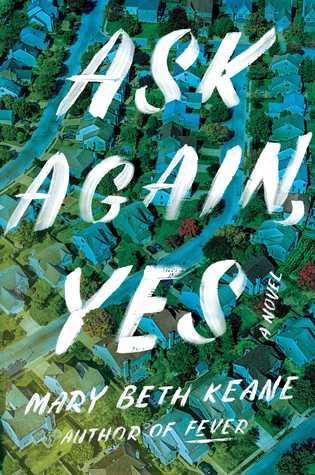Paul Auster has created a mesmerizing series of narratives by mixing up four novels in one book. The protagonist in all four, Archie Ferguson, bears the Scottish surname that his grandfather received at Ellis Island, but he’s Jewish American, born in Newark in 1947. His life story through early adulthood plays out in four distinctly different ways, depending on choices made by Archie himself and by his family members and friends. The author doles out these four stories in segments, taking us through the phases of Archie’s young life, and he helpfully labels each segment. (There are four versions of chapter 1, four versions of chapter 2, and so forth.)
Some elements of Archie’s personality and tastes carry into multiple stories. Archie is always a good athlete, either in baseball or basketball. He’s sexually active at an early age. One of his bed partners is Amy Schneiderman, who in different versions of the story is his stepsister, cousin, or family friend. Sometimes the Archies have the same experience, as when a professor at Columbia gives two different Archies a copy of the university’s literary magazine. In all four of the narratives, Archie seems to have a preponderance of tragic, early deaths surrounding him, including death by car accident, lightning strike, brain aneurysm, and fire.
As you read 4 3 2 1, you could make a spreadsheet to keep track of all the plot elements, but I recommend that instead you let the stories flow over you. Auster’s extremely long compound complex sentences encourage this latter approach, since the words stream seamlessly down the pages, pulling you along.
4 3 2 1 is about how everyday decisions of everyday people can have long-term ramifications, both for themselves and for those surrounding them. Within the novel, Auster has the characters themselves analyze the phenomenon of choices that change lives:
“ . . . from the beginning of his conscious life, [Archie had] the persistent feeling that the forks and parallels of the roads taken and not taken were all being traveled by the same people at the same time, the visible people and the shadow people, and that the world as it was could never be more than a fraction of the world, for the real also consisted of what could have happened but didn’t, that one road was no better or worse than any other road, but the torment of being alive in a single body was that at any given moment you had to be on one road only, even though you could have been on another, traveling toward an altogether different place.”
Reading all 866 pages of 4 3 2 1 takes serious commitment. You are more likely to keep turning those pages if you enjoy novels about the 1960s in America. When I saw that Archie Ferguson was born in 1947, I immediately calculated that he would come of age in the 1960s, during the Vietnam War, when young American males were subject to the draft, and those drafted males were almost always sent to the jungles of Southeast Asia. Novelist Auster confronts this cruel fact in four different ways, and watching him do it is intriguing. Paul Auster was himself born in 1947, so he knows whereof he writes, though I would caution against reading 4 3 2 1 as a memoir or autobiography, despite the metafictional echoes of the novel’s closing pages.
One of the four Archie Fergusons, studying at Columbia University on a draft deferment, muses: "The postwar children born in 1947 had little in common with the wartime children born just two and three years earlier, a generational rift had opened up in that short span of time, and whereas most of the upperclassmen still bought into the lessons they had learned in the 1950s, Ferguson and his friends understood that they were living in an irrational world, a country that murdered its presidents and legislated against its citizens and sent its young men off to die in senseless wars, which meant that they were more fully attuned to the realities of the present than their elders were.”
Another theme that I pick up from 4 3 2 1 is the way wealth—or the lack of it—affects life choices dramatically. Here is one example, right after one of the Archies has come into some cash:
“Thousands of dollars were sitting in his account at the First National City Bank on the corner of West 110th Street and Broadway, and just knowing they were there, even if he had no particular desire to spend them, relieved him of the obligation to think about money seven hundred and forty-six times a day, which in the end was just as bad if not worse than not having enough money, for these thoughts could be excruciating and even murderous, and not having to think them anymore was a blessing. That was the one true advantage of having money over not having money, he decided—not that you could buy more things with it but that you no longer had to walk around with the infernal thought bubble hanging over your head.”
And then there’s New York City of the 1960s, conjured up by Auster with all its grit and glamor, and I can seldom resist New York novels. As one character comments, “New York is it.”















